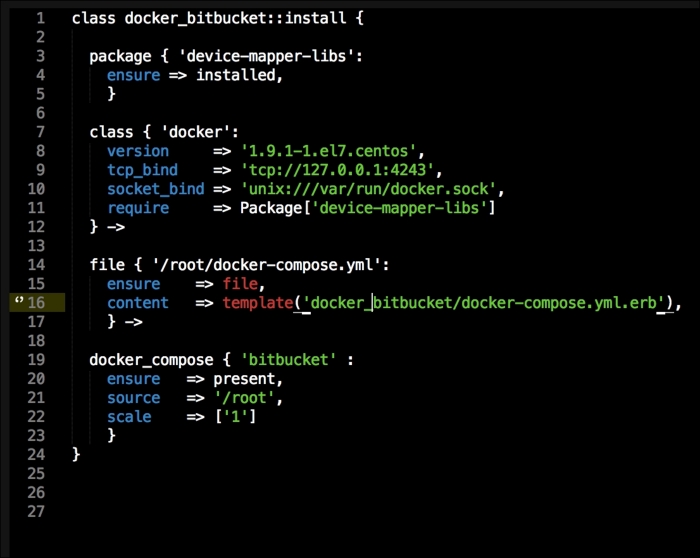In this topic, we are going to build the same Bitbucket application. The difference this time is that we are going to use docker-compose as a .erb file instead of the resource declarations in a manifest.
We covered a lot of what happens under the hood in the last topic. We will not be repeating ourselves, so this topic will be just about the code. We are going to keep both init.pp and params.pp the same as we did in the last topic. So, let's jump straight to install.pp. It will look very similar to install.pp from the last chapter:

All the magic happens in our template file. So, let's jump to our .erb file that lives in the templates folder in the root of our module:

As you can see in our .erb file in the preceding screenshot, all the configurations are familiar. There are absolutely no changes to what we covered in our last topic.



